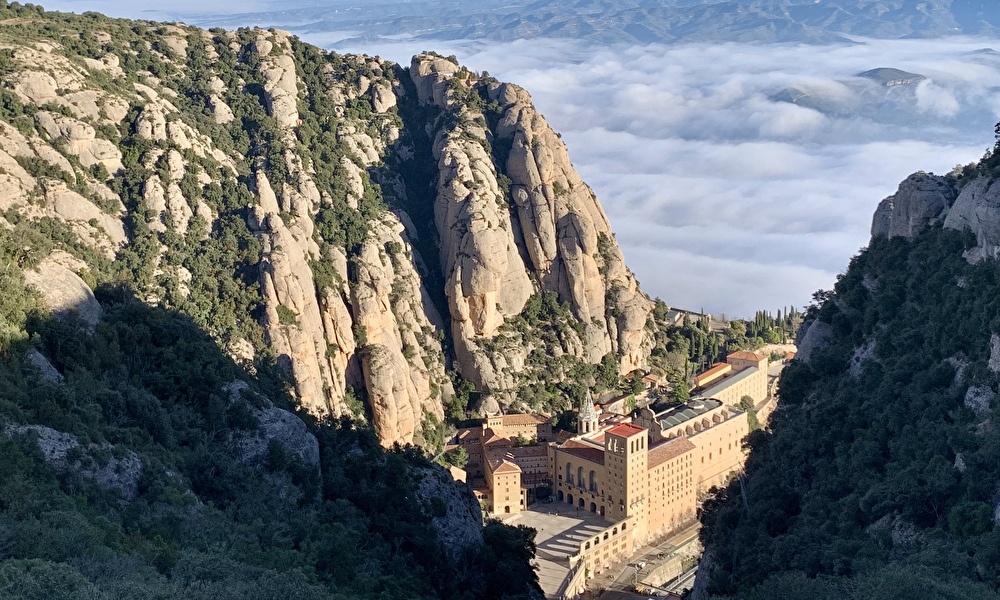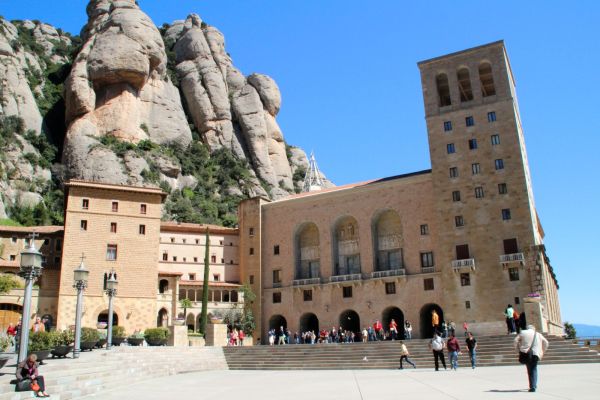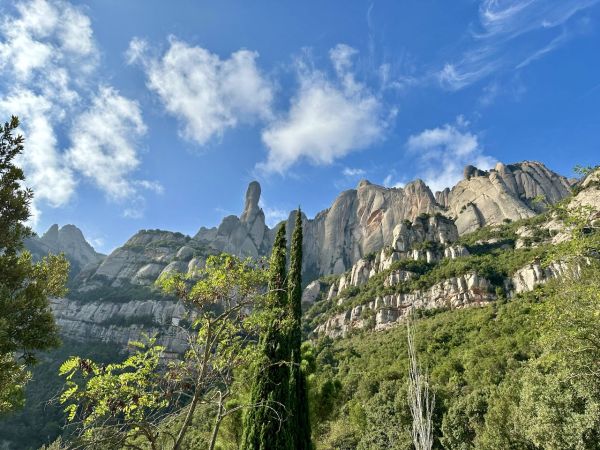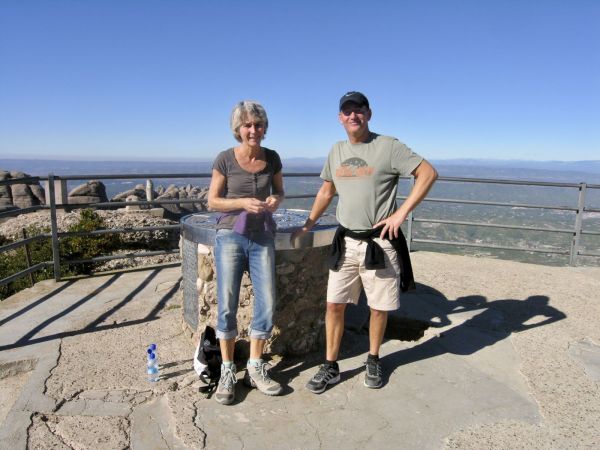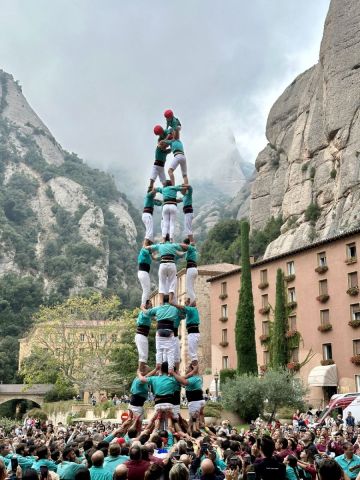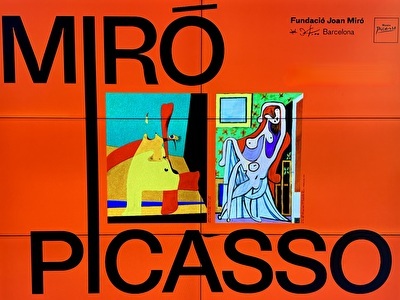Between rocks and legends – to Montserrat and the Black Madonna
A mountain full of stories
The name Montserrat literally means "sawn mountain," and anyone who sees it understands why. Wind and rain have carved the soft sandstone into bizarre shapes: peaks, towers, rounded knobs. Catalan legends tell that angels themselves sculpted the mountain, using golden saws, to create a worthy seat for the Virgin Mary.
The Benedictine monastery, nestled in a rocky alcove since the 11th century, became an important spiritual center. According to tradition, the statue of the Virgin was found in the 9th century in a cave—Santa Cova—by shepherds who saw a miraculous light. When they tried to transport the statue to Barcelona, it suddenly became too heavy to move. This was seen as a sign: the Madonna wanted to stay here.
For centuries, pilgrims came from all over Spain, and later from abroad as well, to honor the Moreneta. In the 19th century, after destruction by Napoleonic troops and later the Spanish Civil War, the monastery was rebuilt and restored several times. Today, Montserrat is both a religious pilgrimage site and a cultural symbol of Catalonia.
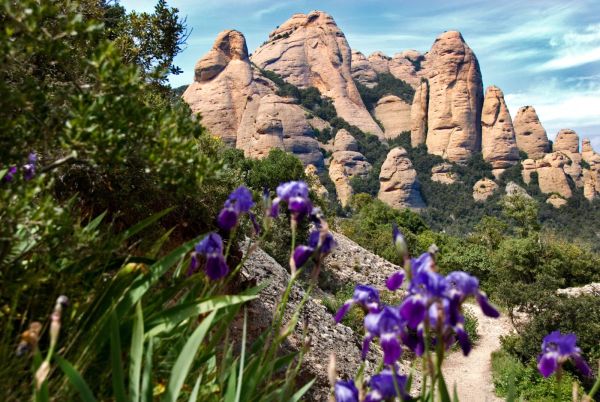
Meeting the Moreneta
The monastery complex is partially open to visitors. At the center is the basilica, austere yet impressive, with high vaults and gold details around the altar. Behind the main altar, a staircase leads up to the throne of the Moreneta. The statue, only 95 centimeters high, depicts Mary with the Christ Child on her lap. Their faces and hands are darkened, likely due to oxidation of the varnish and candle smoke over the centuries—but for the faithful, being black is a mystery and a miracle in itself.
There is often a long line, especially during peak season, but the moment you see the statue up close is worth it. Many touch the sphere in the Madonna's right hand—a gesture that represents protection and blessing.
If your timing allows, listen to the famous boys' choir Escolania de Montserrat. These students have been singing in the monastery liturgy since the 13th century and still attract visitors with their clear voices. They usually perform around noon, but it's a good idea to check beforehand.
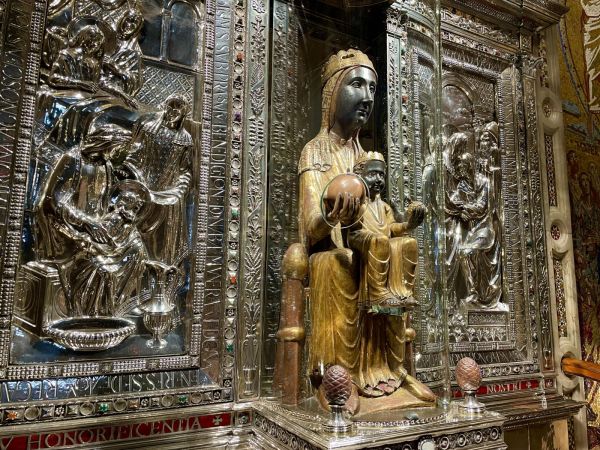
The ride to heaven: Sant Joan cog railway
Above the monastery, you'll see even higher peaks. You can reach them by the Funicular de Sant Joan—a steep cog railway that covers a world of difference in just a few minutes. As the car ascends, the monastery terrace unfolds below you, and the Llobregat valley continues to unfold.
At the top, a small viewpoint awaits with panoramic signs that tell you which peaks and towns you can see in the distance. A network of hiking trails also begins here.
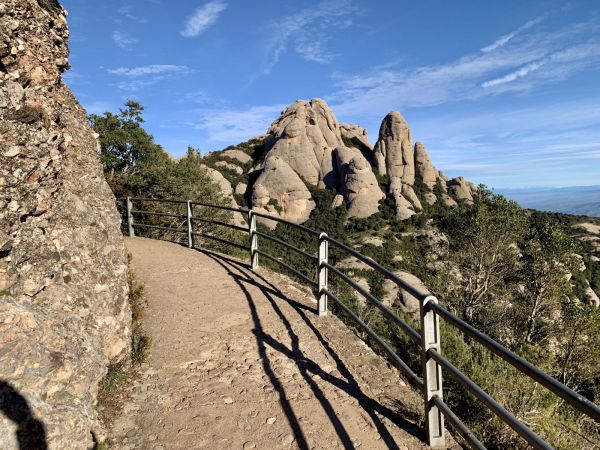
Hiking to the summit: Sant Jeroni
Montserrat's highest peak is Sant Jeroni (1,236 meters). From the funicular's upper station, it's about a 3- to 4-hour round trip, depending on your pace. The path winds past rock formations with names that reflect their shapes: Cavall Bernat, Les Agulles, and Els Frares Encantats. Along the way, you'll pass pine trees, thickets of thyme and rosemary, and clearings where griffon vultures circle high above.
The final stretch to the summit is via stairs and narrow paths. At the top, a 360-degree view awaits, reaching the Pyrenees to the north and the Mediterranean Sea to the south on clear days. It's a quiet place, even with other hikers, as the wind and the vastness bring an almost meditative calm.

Back to the Monastery
The descent usually follows the same route back to the funicular station. Along the way, you can take a detour to Santa Cova, the cave where, according to legend, the statue was found. A separate funicular—the Funicular de la Santa Cova—takes you down a short distance, after which you'll walk along a rosary path lined with mosaics by famous Catalan artists, including Antoni Gaudí and Josep Llimona.
Practical tips for a day trip
- Depart early to allow time for the monastery, Moreneta, the funicular, and the hike.
- Clothing: Wear comfortable walking shoes and bring layers; it can be chilly at the top of Sant Jeroni, even in summer.
- Food: There are cafes and a self-service restaurant at the monastery, but a picnic for the hike is much more fun.
- Tickets: Consider buying tickets in advance to visit the monastery.
- Respect: The monastery is still active, please be quiet in the basilica and dress appropriately. A day full of contrasts
What makes Montserrat special is its contrast and coherence: the rugged, almost otherworldly rocks and the serene religious sites; the ancient legend and the vibrant day trip scene; the physical exertion of the climb to Sant Jeroni and the tranquility at the Moreneta. Montserrat is not a backdrop, but a place that lives, that carries stories and writes new ones for everyone who makes the trek. A must for every visitor to Montserrat.
